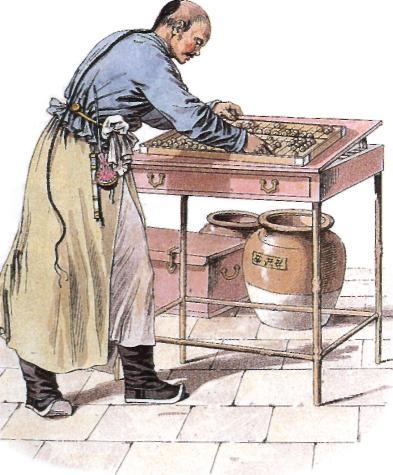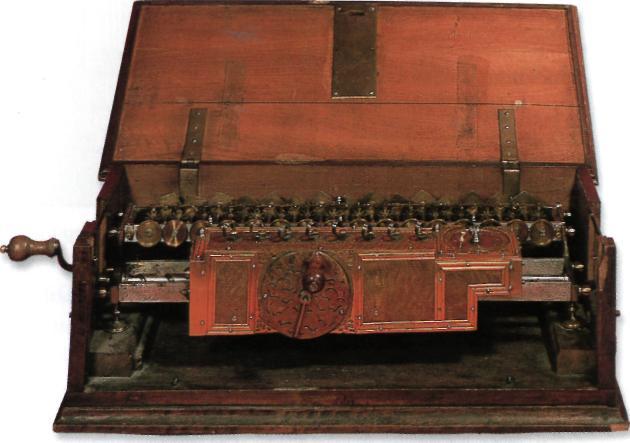
- •Contents
- •Передмова
- •Unit 1 The computer age
- •In the beginning
- •I read the text. Are these true (t) or false (f)? Correct the sentences where it is necessary.
- •Unit 3 The first computers
- •I Answer the following questions:
- •II Put the sentences in the right order:
- •III Translate the text.
- •IV Write the annotation to the text. Unit 4 Alan Turing
- •I Answer the following questions to the text:
- •II Put the sentences in the right order:
- •III Translate the text
- •IV Write the annotation to the text.
- •V Read Chapters 3 and 4, then circle a, b or c:
- •Unit 5 The history of the pc
- •I Answer the following questions:
- •II Complete the sentences:
- •III Put the sentences in the right order:
- •IV Translate the text
- •V Write the annotation to the text. Unit 6 Bill Gates and Microsoft
- •I Put the sentences in the right order:
- •II Put five questions to the text:
- •III Translate the text
- •IV Write the annotation to the text.
- •Man versus computer
- •Part one
- •I Read the text. Are these sentences true (t) or false (f). Correct the sentences where it is necessary.
- •II Write five-six questions to the text:
- •III Translate the text
- •IV Write the annotation to the text. Unit 8 Man versus computer
- •I Are these sentences true (t) or false (f). Correct the sentences where it is necessary.
- •II Put the sentences in the right order:
- •III Translate the text
- •IV Write the annotation to the text.
- •The Internet
- •Part one
- •I Put the sentences in the right order:
- •II There is a special kind of language which people use to save time. There are some samples of it. Can you guess them? Translate them.
- •III Translate the text
- •IV Write the annotation to the text.
- •Unit 10
- •The Internet
- •Part two
- •I Answer the following questions:
- •II Translate the text
- •III Write the annotation to the text. Unit 11 Getting the message
- •Unit 12 Computer games
- •I Circle the correct words:
- •II Write seven questions to the text:
- •III Put the sentences in the right order:
- •IV Translate the text
- •V Write the annotation to the text. Unit 13 'I Love You' (and other viruses)
- •Unit 14 Computer crime
- •Unit 15 The Future
- •Glossary
- •050101 «Комп’ютерні науки»
- •65082, Одеса, вул. Дворянська 1/3
In the beginning
For thousands of years, humans have needed to count. Families needed to know how many animals, how much food and how much land they had. This information was important when people wanted to buy and sell things, and also when people died or got married. There were many different ways to count and write down the numbers. The Sumerians had three different ways: they used one for land, one for fruit and vegetables, and one for animals. They could count, but they had no easy way to do calculations.
Around 1900 to 1800 BC, the Babylonians invented a new way to count which used place values. This meant that two things decided the size of a number: the digits and their position. Today, we still use place values to count. We can write any number using only ten digits (0-9): for example, 134 means 1 x 100, 3 x 10, and 4x1. Computers also use place values when they do calculations. They only use two digits (0 and 1): for example, 11011 means 1 x 16, 1 x 8, 0 x 4, 1 x 2, and l x l (=27). Without place values, fast calculations are impossible.
Between 1000 and 500 BC, the Babylonians invented the abacus. It used small stones which they put in lines. Each line of stones showed a different place value. To do calculations they moved stones from one line to another. Later, different kinds of abacuses were made. Some of them were made of wood and used coloured balls. (It is also possible that the abacus was first invented in China, but nobody really knows.)
Although an abacus can be very fast, it is not really a machine because it does not do calculations automatically. In the seventeenth century, people began to build calculating machines. In 1640, the French mathematician Blaise Pascal made an Arithmetic Machine. He used it to count money. During the next ten years, Pascal made fifty more machines.
In the 1670s, a German called Leibnitz continued Pascal's work and made a better machine. Leibnitz's machine was called the Step Reckon. It could do more difficult calculation than Pascal's Arithmetic Machine. Interestingly, Leibnitz's machine only used two digits (0 and 1) for doing calculations – just like modern computers! In fact, calculating machines like Leibnitz's Step Reckoner were used for the next thirty hundred years, until cheap computer began to appear.
 An
abacus
An
abacus

The Step Reckoner
Tasks
I read the text. Are these true (t) or false (f)? Correct the sentences where it is necessary.
-
Around 1900 to 1800 BC, the Chinese invented a new way to count which used place values.
-
Computers don’t use place values when they do calculations.
-
An Abacus can be very fast, it is a really machine because it does calculations automatically.
-
In 1460, the French mathematician Blaze Pascal made a Difference Engine.
-
Leibnitz’s machine was called the Step Reckoner.
II Put four questions to the text
III Put these sentences in the right order:
-
In the seventeenth century, people began to build calculating machines.
-
Leibnitz’s machine, called the Step Reckoner, could do more difficult calculations than Pascal’s Arithmetic Machine.
-
For thousands of years, humans have needed to count.
-
Between 1000 and 500 BC, the Babylonians invented the abacus.
-
The Sumerians had three different
IV Read Chapter I and II. Then complete the sentences with the words and phrases below.
In 1642/ in the 1940s and 1950s/ in the nineteenth century/ about three thousand years ago/ every day.
-
The Industrial Age started ……
-
Many people use computers …….
-
The first computers were built …..
-
The abacus was invented …..
-
A French mathematician made an Arithmetic machine …..
V Translate the text
VI Write the annotation to the text.
